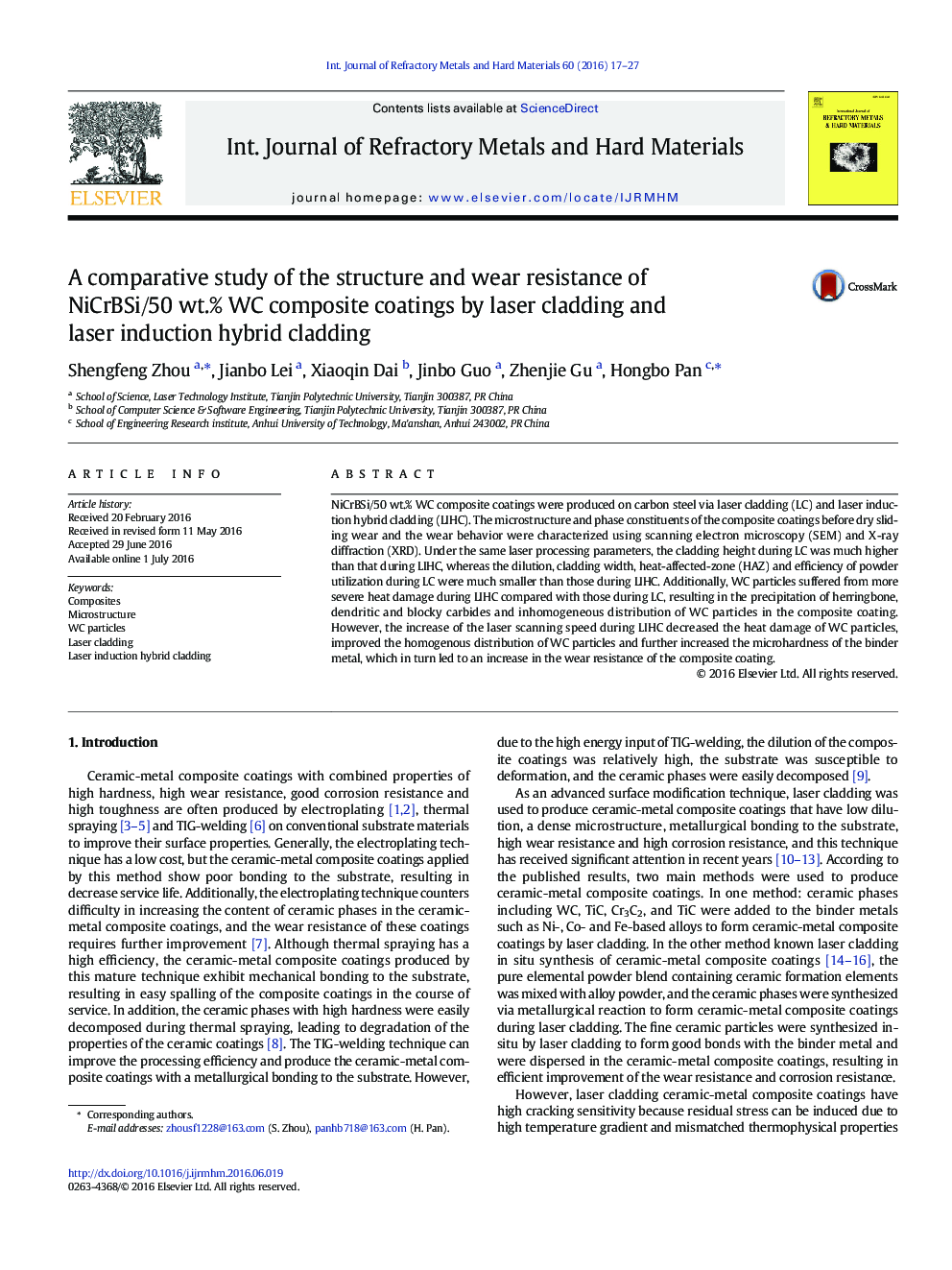| کد مقاله | کد نشریه | سال انتشار | مقاله انگلیسی | نسخه تمام متن |
|---|---|---|---|---|
| 1602547 | 1515959 | 2016 | 11 صفحه PDF | دانلود رایگان |

• Maximum scanning speed can be increased to 1500 mm/min in Ni-based 50% WC coating by LIHC.
• Maximum powder feeding rate can be increased to 65.3 g/min in Ni-based 50% WC coating by LIHC.
• Most of WC particles dissolved and carbides with different shapes were precipitated during LC.
• Herringbone carbides precipitated and incompletely dissolved WC distributed at the side of coating by LIHC.
• Wear resistance of LIHC coating was 1.4 times higher than that of LC coating when laser scanning speed was 1500 mm/min.
NiCrBSi/50 wt.% WC composite coatings were produced on carbon steel via laser cladding (LC) and laser induction hybrid cladding (LIHC). The microstructure and phase constituents of the composite coatings before dry sliding wear and the wear behavior were characterized using scanning electron microscopy (SEM) and X-ray diffraction (XRD). Under the same laser processing parameters, the cladding height during LC was much higher than that during LIHC, whereas the dilution, cladding width, heat-affected-zone (HAZ) and efficiency of powder utilization during LC were much smaller than those during LIHC. Additionally, WC particles suffered from more severe heat damage during LIHC compared with those during LC, resulting in the precipitation of herringbone, dendritic and blocky carbides and inhomogeneous distribution of WC particles in the composite coating. However, the increase of the laser scanning speed during LIHC decreased the heat damage of WC particles, improved the homogenous distribution of WC particles and further increased the microhardness of the binder metal, which in turn led to an increase in the wear resistance of the composite coating.
Journal: International Journal of Refractory Metals and Hard Materials - Volume 60, November 2016, Pages 17–27